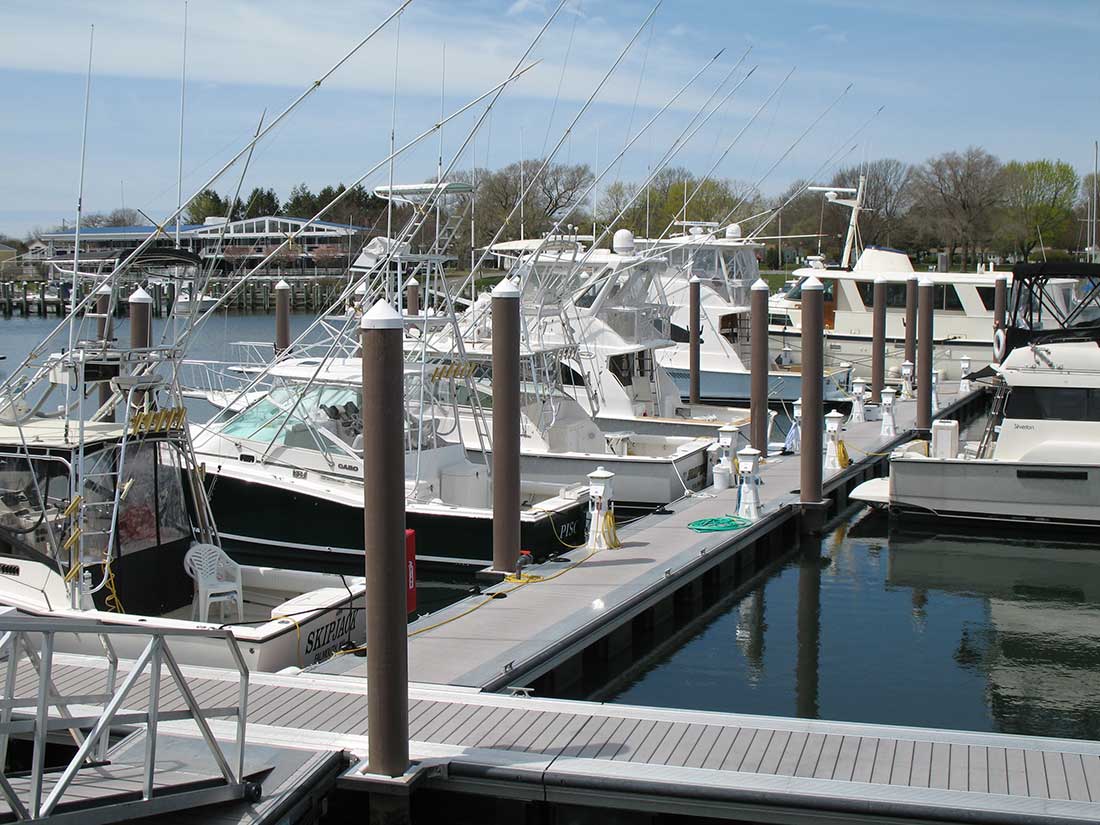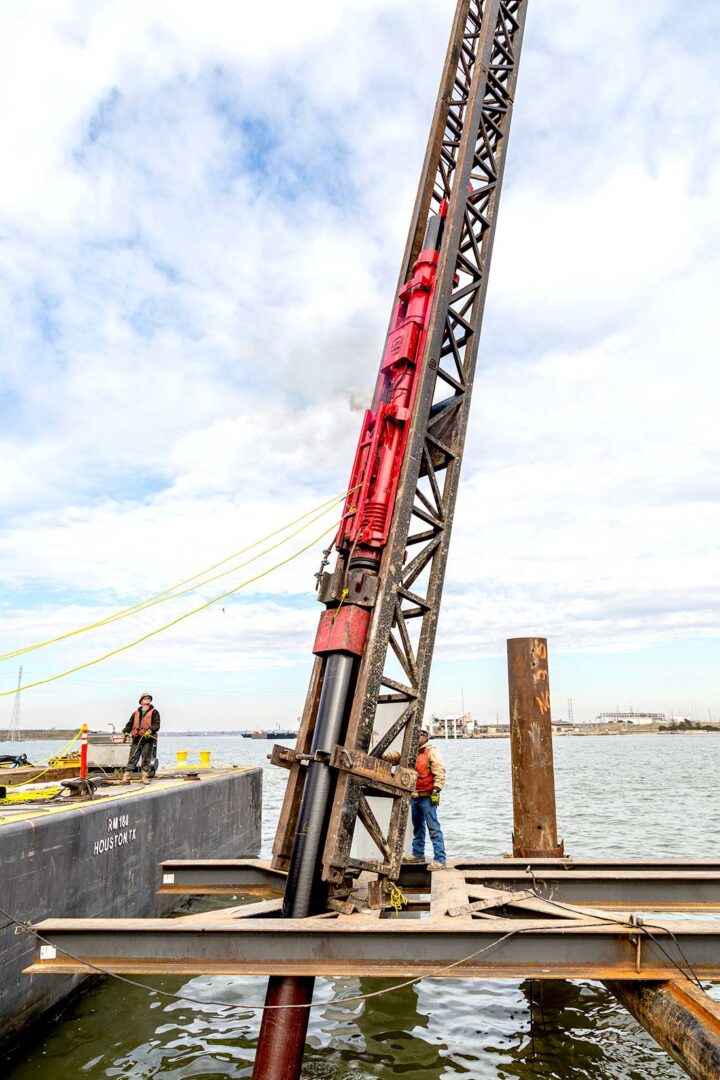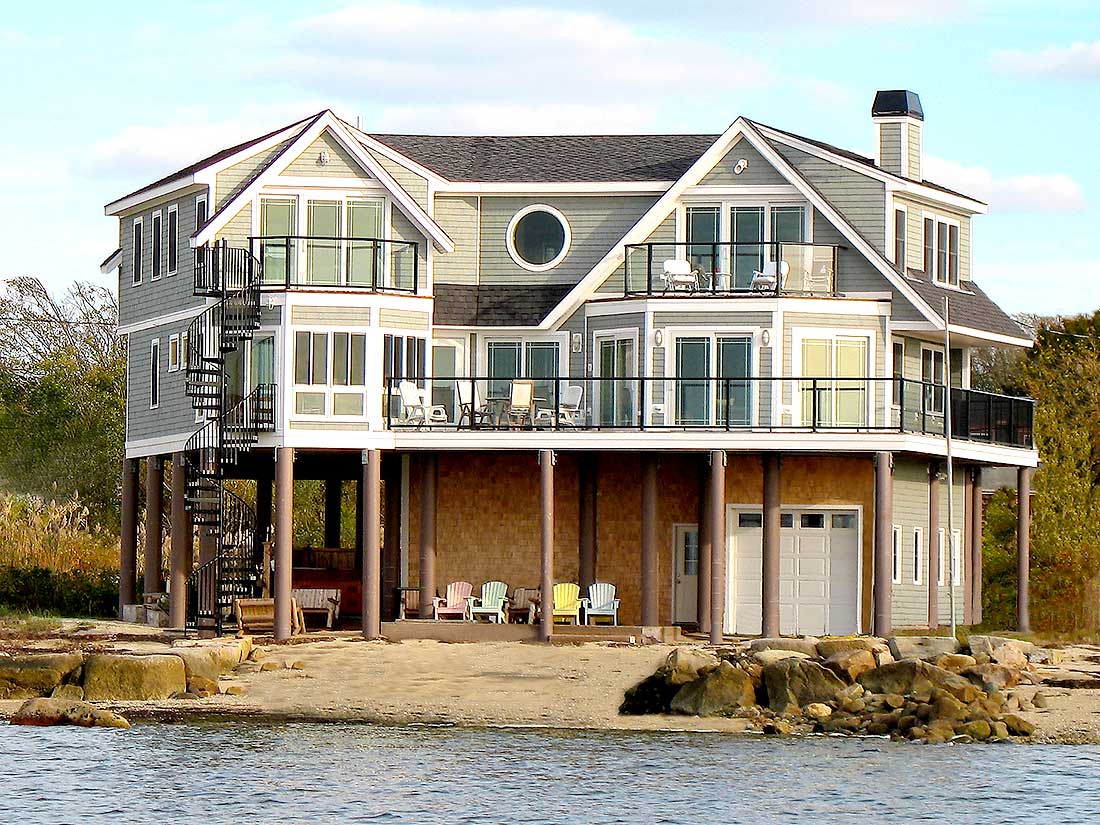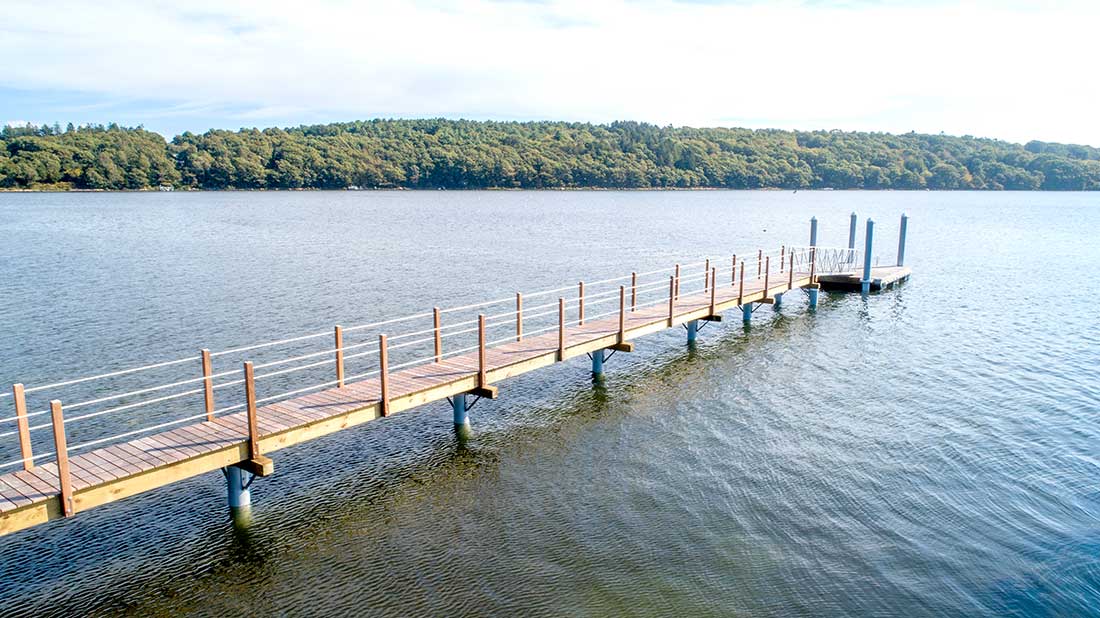
Mark Pearson and his late father, Everett Pearson, a pioneer in boat production and fibreglass technology, developed their first fibreglass piling in 1996 and, in 2005, formed Pearson Pilings, located in Somerset, Mass. Since the company’s founding, Pearson Pilings have been used for piers, docks and other shoreline projects from South America to Alaska, including for a few docks and residential piers in British Columbia and Nova Scotia.
“And because fibreglass gets stronger as it gets colder down to minus 50 degrees or so Fahrenheit, and then levels off, cold and freezing environments are not a problem,” said Pearson, who has been the company’s owner and president since 2014.
He says their fibreglass piles are ideal for busy fendering systems due to their exceptional strength and flexibility. They have been used as attractive open foundation design features for structures in certain U.S. East Coast flood zones, while still adhering to Federal Emergency Management Agency guidelines.

“In most cases, fibreglass composite piling costs the same or less than steel, roughly two to three times more than typical wood piling, but in the long run, their longevity and lower maintenance cost make them cost-effective compared to conventional steel, wood and concrete pilings,” he said.
As the cure time with concrete is generally eliminated, projects can be completed more quickly, further saving costs and time. Driving costs are also lower than conventional piles in many cases.
“When we’re able to use our monopile system to go down the middle of a four-foot-wide dock, say, or to spread them out further apart, we use fewer pilings. And environmental agencies like that we don’t have to make as many penetrations into environmentally sensitive areas such as eelgrass or marshy areas,” Pearson said, adding it also cuts down on marine environmental impacts.
He also says that a fibreglass piling is a perfect solution for areas that ban treated pilings. “The piles will never rust or rot – they’re constructed entirely of composite materials, and once the fibreglass piling is cured, it basically carries zeros on the safety sheet – it’s inert, there are no chemicals, no leachate, so it’s non-polluting.”
3D fibreglass produces piles that tolerate high impacts and resist delamination
The 3D fibreglass structure – in-plane warp and weft fibres with additional needled fibres running in the z-axis – produces piles that tolerate high impacts and effectively resist delamination. The pilings can be handled and driven like traditional ones, with earth compactors or vibratory, drop or power hammers. When using a driving hammer, a driving block or shoe is sometimes used to spread the force of the impact over the pile’s entire surface.

“The only time that fibreglass piling would have difficulty is in very rocky or shaley environments,” Pearson said. “Blow counts of 50- to 60-plus end up being difficult to drive in for a composite. So, in some applications, they’ll drive a steel piling and punch a hole first, then put a fibreglass piling in, the same way they might have to do with wood, or auger a hole and drop it in, depending on the density of the material, such as granite or some other type of rock environment.”
The composite piles are available in diameters of eight inches, 10 inches, 12 inches and 14 inches, and continuous lengths up to 55 feet, with wall thicknesses ranging from 1/8 inch to over 1/2 inch. Once a piling has been cured with Pearson’s vacuum infusion process, it is painted with a two-part polyurethane paint, which is hydrolytic and protects the piling from UV damage, or it can be painted with the client’s own paint. Pearson says that the lightweight nature of fibreglass makes it easy to transport and install. The pilings can be spliced after driving, so the required depths can be easily achieved even in constricted or overhanging environments.
“When you sell your property, your home or your dock, pilings will be an asset, not a liability.”
Mark Pearson, Pearson Pilings
Most contractors bolt the framing structure to the piling with galvanized or stainless steel brackets configured to meet the project’s specifications. Designs can incorporate composite, stainless steel or galvanized brackets, and any decking material, including traditional woods. All components can be pre-cut and pre-drilled without composite expertise or specialized equipment.
In the field, Pearson recommends using a circular or cut-off saw equipped with a diamond blade to cut the piles, and a carbide or diamond-tipped bit to drill through them. Since Pearson Pilings are hollow, holes can be drilled into the piling to allow pipes to pass through, and utilities can run inside the pilings into a building to ensure the components are safe during storms or floods. If the pilings are filled with concrete, brackets can be placed into the concrete before curing.
The piles have a maximum weight-bearing capacity and bending moment; all of Pearson’s engineering data is based on tests done by outside agencies to meet ASTM International specifications and to determine the physical characteristics of the piles. The data can be obtained by contacting Pearson Pilings at www.pearsonpilings.com.
Over-torqued bolts can compromise the integrity of the material, and Pearson supplies torque ratings for various pile-wall thicknesses and recommends using oversized galvanized or stainless steel washers or backing plates for any bolted connections into the pile.
Fibreglass composite is inert and non-polluting once it’s cured
“We build the piling under a very controlled environment and visually inspect every piling before it leaves,” Pearson said. “Each pile is tailored based on the physical requirements of each job – if people are designing for a downward load, they’d match up the piling for what they’re doing. If it’s bending moment that you’re looking for, being able to take a horizontal load – like for a ferry terminal where vessels are going to come in and hit the piling – you’d look at what type of loading you needed and matched it up to the pile that makes the most sense.”

Pearson’s resins are produced in Ohio and the glass is fabricated in Texas. While some raw materials coming from China have been involved in the global supply chain issues in recent years, “supply has gotten much better, in line with what we saw before the pandemic,” Pearson said; orders can typically be delivered in three to six weeks.
“You’re going to get a return on your investment using a composite fibreglass piling. Even though you paid more for the piling up front, in 20 or 30 years, when you sell your property, your home or your dock, pilings will be an asset, not a liability,” Pearson said. “We always hope that people give us a fair look and understand what a fibreglass piling can do – there is a place for us in the marketplace, as we’ve found since 2005.”